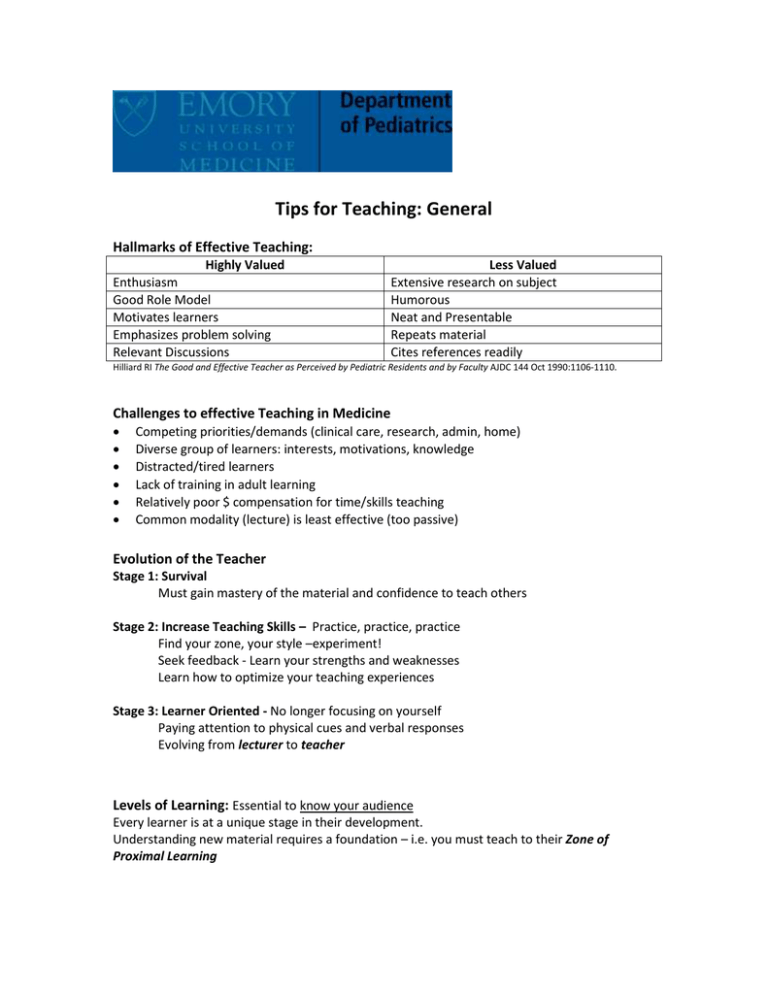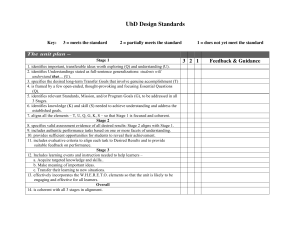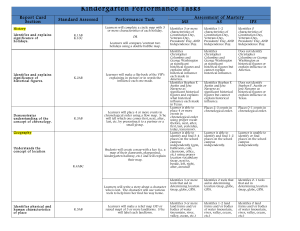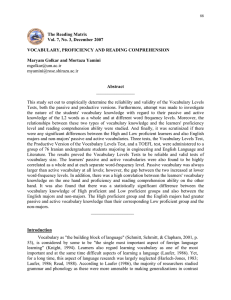Tips for Teaching: General Hallmarks of Effective Teaching:
advertisement

Tips for Teaching: General Hallmarks of Effective Teaching: Highly Valued Enthusiasm Good Role Model Motivates learners Emphasizes problem solving Relevant Discussions Less Valued Extensive research on subject Humorous Neat and Presentable Repeats material Cites references readily Hilliard RI The Good and Effective Teacher as Perceived by Pediatric Residents and by Faculty AJDC 144 Oct 1990:1106-1110. Challenges to effective Teaching in Medicine Competing priorities/demands (clinical care, research, admin, home) Diverse group of learners: interests, motivations, knowledge Distracted/tired learners Lack of training in adult learning Relatively poor $ compensation for time/skills teaching Common modality (lecture) is least effective (too passive) Evolution of the Teacher Stage 1: Survival Must gain mastery of the material and confidence to teach others Stage 2: Increase Teaching Skills – Practice, practice, practice Find your zone, your style –experiment! Seek feedback - Learn your strengths and weaknesses Learn how to optimize your teaching experiences Stage 3: Learner Oriented - No longer focusing on yourself Paying attention to physical cues and verbal responses Evolving from lecturer to teacher Levels of Learning: Essential to know your audience Every learner is at a unique stage in their development. Understanding new material requires a foundation – i.e. you must teach to their Zone of Proximal Learning RIME Model: Evaluating the student clinician Reporter: identifies and relays relevant information, data Interpreter: identifies and prioritizes problems, offers a differential Manager: develops and implements a reasonable treatment plan Educator: can teach concepts; skilled in identifying new questions Bloom’s Taxonomy: Levels of understanding Knowledge – data Comprehension – definition Application – identify relationship of a fact in its context Analysis – ability to see how something is put together Synthesis – ability to create something new Evaluation – ability to judge value of information Understanding Memory In general we can recall: 10% of what we read 20% of what we hear 30% of what we see 50% of what we see and hear 70% of what we say and write 90% of what we do Therefore, active learning is generally far more effective than passive learning (although often less practical). Best recall tool for passive learning is the metaphor: match new information to an established concept e.g. Asthma treatment is like putting out a fire: We spray our medicine until the reaction is controlled. Adult Learners: Seek novel & practical information = “pearls” Need inspiration (grades no longer a motivation) Dislike irrelevant data Effective teaching requires that the teacher (1) identifies and addresses their learning needs and styles (2) gets and keeps their attention (3) teaches in a memorable way



